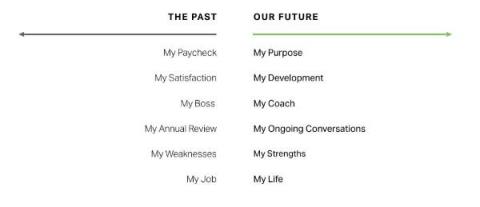Teams | Collaboration | Customer Service | Project Management
Teamwork
Why Employees Are Disengaged and What You Can Do About It
Gallup, the analytics and consulting firm, started measuring employee engagement in 2000. They published that employee engagement was at an all-time high of 34% in 2018. Although that is good news, we are far from finished when it comes to creating companies that are exciting and fulfilling places to work at (whether virtual or in-person). Gallup published a separate article exploring the reasons behind why the majority of U.S. employees are not engaged despite the gains.
Navigating the future of work: Creating a better workplace for our teams
The latest challenge for organizations of all sizes is thinking about how to build the office of the future. Now that many employees are either considering working remotely or in a hybrid setting permanently, business leaders struggle to envision an office that works for everyone. The office of the future will surely be more expansive than previous models, with technology and processes that set all employees up for success regardless of when and where they are working.
Don't want to return to the office? Here's what to do
Why Enterprise Collaboration Tools & Platforms are the Present - And the Future
Driving collaboration and instant communication through tools and technology seems unnatural and counter-intuitive. However, the onset of COVID-19 has brought previously unimaginable work scenarios to life - Enterprises with a technology-averse mindset were forced to learn and adapt to collaboration tools overnight. Work-From-Home (WFH), a once dreaded concept, became the savior for multiple businesses - big and small.
7 ways a hybrid work model could fail (and how to avoid them)
6 Things You Can Do Right Now to Make Your Remote Team More Productive
Remote work has existed for decades as an alternative to the traditional in-office work environment. When it first became a viable option—people have been working remotely since the dawn of email in 1971 and before via telephone—distributed work was often met with trepidation by companies and employees alike. In recent years, however, working remotely, “working from home,” and other similar terms have become commonplace.
Managing distributed teams: 3 tips for practicing inclusive communication
One of the best parts of my job is how diverse my team is. As the Head of Revenue Marketing at Asana, the people I work with are spread across the globe and timezones. Even when everyone returns to the office, I’ll still have a distributed team with team members in the US, Asia, Europe, and Australia. Given the makeup of my team, I had a lot of experience managing a distributed team even before the world suddenly shifted to remote work.
Saving time to save lives: this Best in Class Team Award winner is always racing the clock
Managing distributed teams: How to lead with cross-cultural empathy
The shift to remote work at the beginning of the pandemic took most of us by surprise. More than a year later, a return to office is finally in sight for many of us, but we know it won’t be as simple as unlocking the doors. For one thing, there will be a lot of doors. With offices in nine countries, the global Asana team will still be distributed even when we return to in-person collaboration.











